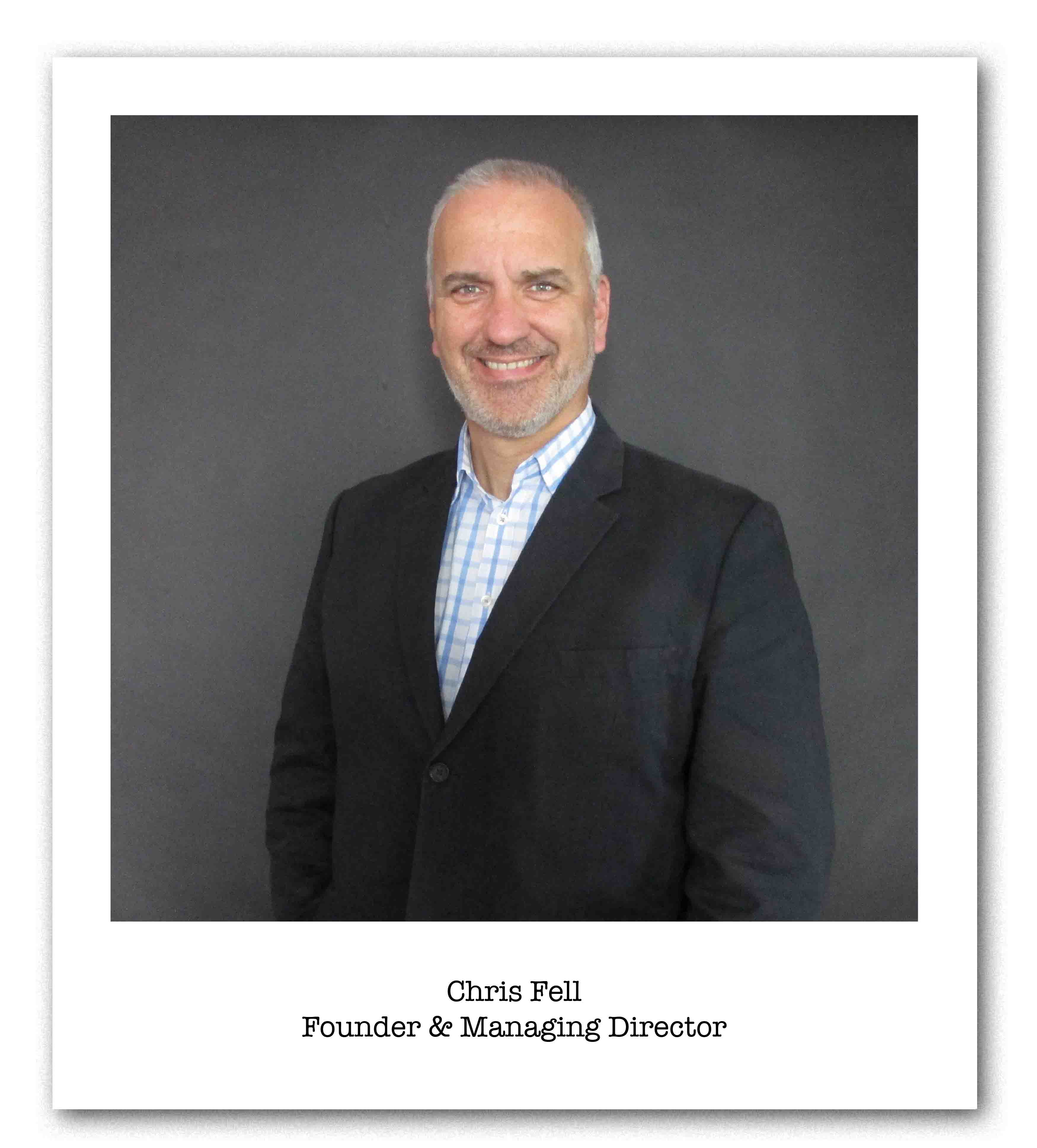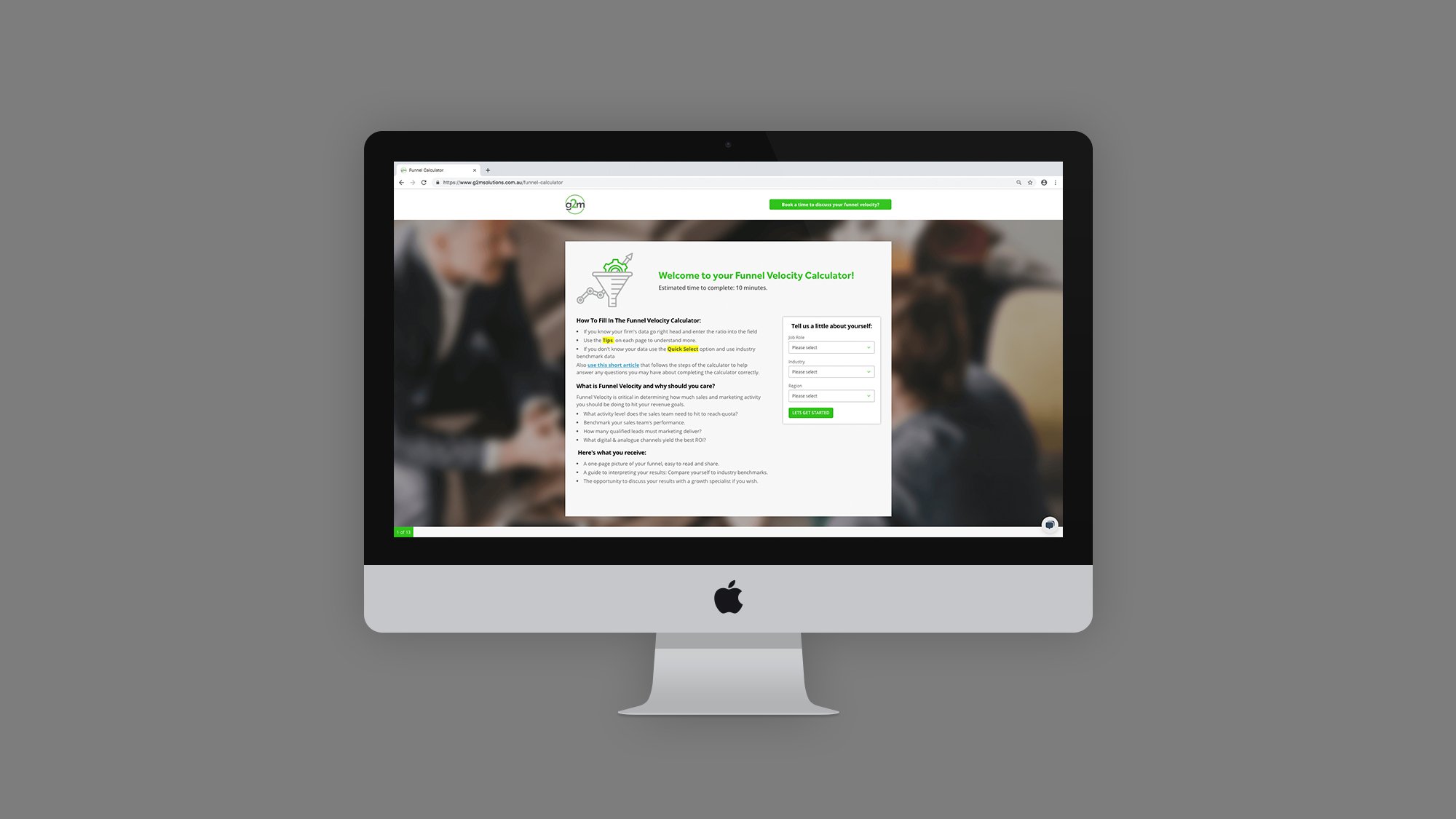Get WISER with Your AI Prompts - A guide for sales managers
Everyone’s wittering on about AI like it’s the second coming. But here’s the rub: if you give it half-baked prompts, you’ll get half-baked answers....
8 min read
 Chris Fell
26/02/2019 2:43:20 PM
Chris Fell
26/02/2019 2:43:20 PM

If you want to read about the background to funnel velocity, why it's important and how to use it in your business start reading from the top. If you want to use the calculator right now and just need some guidance on completing the sections, scroll through the blog to the relevant slide you need help with.
The concept of funnel velocity is simple, but vitally important. It answers the question, "How fast do we need to run our sales and marketing engine to reach our revenue goals?" It's hard to imagine a more important question to get right.
Working out the specifics can be hard. Many questions need to be answered and stitched together into a cohesive canvas. Amongst others:
Read this blog in conjunction with completing this completely free and very cool online Funnel Calculator Tool (even if we do say so ourselves!). You'll end up with a one page graphical representation of the activity you need to generate to hit your revenue goals.
The rest of this blog should be read in conjunction with completing the Funnel Velocity Calculator. Now open the calculator and complete the demographic questions on slide 1.
You want your funnel velocity to focus on the sales and marketing activity required to close new business, not revenue you already have in the bag.
This is why we want you to only include new revenue from existing customers AND new revenue from new customers but NOT revenue from existing products or service streams sold in a prior period. Revenue from existing customers is key for most businesses as win rates are significantly higher and deals close faster. Balancing new revenue from existing and new customers manages your risk of missing your revenue growth goal.
It’s up to you. We usually recommend monthly as it is more intuitive and useful when it comes to tracking actual activity compared to your goals set out in the Funnel Velocity plan.
Yearly time periods are useful at planning time as you try to understand the investment required in people and dollars to support your growth goal or as you test different scenarios.
What is important is that you remain consistent when you enter values and ratios into the calculator. If you start with monthly, then stick with monthly throughout.
Some people struggle with this as their products range in price quite dramatically. This is an average, so you need to make an estimate. Take the total new revenue from last year and divide it by the total number of new deals you closed. If you have wildly different products and price points and you feel averaging it out renders the results less meaningful, then we recommend simply running two Funnel Velocity calculators, one for each line of business.
Break out the proportion of your new revenue that will be generated by existing customers vs revenue that will come from net new customers, with whom you have not worked before. If your business is subject to seasonal differences, use historical data from a similar time period to ensure you account for these fluctuations,
It's important to only enter the percentage of times you win when you submit a proposal. This is NOT the overall sales close rate, which is usually defined as from the point a lead becomes qualified or accepted by sales right the way through to when it closes.
As you might imagine, typically the win ratio for new proposals to existing customers as opposed to brand new opportunities is a great deal higher and faster. One red light to watch out for is if you are betting your revenue growth target on a large number of new customers. The risk is significantly higher, especially if its back end loaded in the planning time period as sales cycles with a new prospect are notoriously slow to close.
This stage is where the salesperson is exploring the lead's needs and is starting to work out what they might have in their arsenal of products and services to help solve the buyer's needs. It's the stage before formally submitting a proposal.
Information is power and with the rise of the internet, buyers have access to an unprecedented treasure trove of powerful information, putting them in the purchasing driving seat. As a result, one of the toughest jobs in B2B, cold calling, has got even tougher. Conversion rates are very low. 3% success rate in qualifying a lead would be considered a stellar performance. Often conversion rates are 1% or lower. This partly explains the investment in alternative digital channels, which provide useful, valuable information for buyers to "self serve" and reach out to the seller when they are ready to engage.
When completing this field please remember the ratio is from a cold call to a fully qualified active lead, not just a lead expressing some general interest.
It's worth remembering that in B2B its rare for marketing to generate even half of all qualified leads. In many enterprise and large accounts the numbers are low, as much of the time leads are driven by relationships and referrals from other clients. The buying centre is sophisticated with often 5-6 key influencers in the decision. In these situations marketing continues to play a vital role in assisting sales with valuable content for their sales process such as case studies, ROI calculators and so forth, but this "assist" role should not be included in this lead percentage.
It's worth noting that in a rapid growth or start up situations the ratios for marketing generated leads are likely to be noticeably higher.
Marketing and events are often lumped together, but for this exercise we want the percentage for marketing to isolate the digital centric marketing activities from analogue marketing, such as events, trade shows, and print advertising. They are very different animals and need to be treated differently when evaluating where to invest your lead generation dollars.
Note: Only include actual qualified leads, ready to start a buying conversation, not tyre kickers or new contacts from a business card draw or similar.
Sadly, marketing and sales are often misaligned and what is qualified in marketing's eyes doesn't always align to sale's version of what counts as qualified. Problems with loose definitions of a qualified lead, or missing information, or poor integration between sales and marketing tools and technology are all common causes of leads "leaking" at this stage.
Losing qualified leads at this stage is an expensive exercise as a lot of effort has gone into generating them. We often work with clients in sales and marketing alignment workshops to alleviate this problem.
Marketing have the hard work of taking a contact that has given you a minimum amount of information about themselves, usually just a name and an email address, and working that contact, usually adding value by offering them educational content and offers on your site and via email - until the point where the contact indicates by their behaviour (eg signs up for a trial, demo, ROI calculator, looks at your pricing page) that they are getting serious. In the information rich world in which we live, this challenge is getting harder and harder. Anything over 5% and your firm is doing well.
Your website is much more than a digital shop window. More importantly it's your shop's front door and if done well, it's your shop's showroom too. People should be able to come to your site be drawn in by the compelling information on offer and be encouraged to try before they buy. They should be easily be able to find helpful, educational content. In exchange they should be happy to leave their contact information.
The goal of this stage is to weed out the wheat from the chaff, and allow marketing to focus its efforts on qualifying the right type of contact. Anything more than a 3% conversion rate and you have a well designed, easy to navigate site, great content and simple to complete.
Inbound marketing (sometimes called organic) is the key to long term success, but it is NOT a quick win and many firms resort to paid marketing channels, such as Google Paid ads, to supplement traffic from organic, inbound marketing.
Inbound or organic marketing channels is primarily driven by search engine optimisation (SEO.) People type phrases into the search engines and if you have done a good job of SEO on your site you will appear in the first handful of results. If you achieve this for enough keywords you have hit pay-dirt. Traffic will flow your way. Note: Inbound channels also include social channels, such as LinkedIn. A post or status update with a link to your site is an example of traffic generated by organic social. Put the percentage of traffic generated by all these channels in this box.
Paid marketing channels, refers to all forms of digital advertising. This is primarily Google Pay-Per-Click advertising where you can buy your way onto the first page of the search results if you bid enough money for your chosen search term. Equally, this includes all digital banner advertising, retargeting ads or paid LinkedIn or Facebook ads placed in people's feeds. The percentage of all traffic generated by this activity goes here.
At this point you will see a pop up box that asks you if you want to proceed to your results. It's important to emphasise that you will not be able to go back and change your results beyond this point, without starting again. We recommend using the "Previous" button to scroll back though your entries to make sure you are happy with the results before you hit "Submit."
We strongly recommend downloading the separate guide to interpreting your results. Alternatively, we are available to discuss your specific results with you. If you wish to do this, please hit the "Discuss your results with a growth specialist" button in the calculator or simply go here and pick a time that suits you.
Subscribe to our latest news and updates on HubSpot.

Everyone’s wittering on about AI like it’s the second coming. But here’s the rub: if you give it half-baked prompts, you’ll get half-baked answers....

The business world is falling head over heels for AI—and who can blame it? With promises to reduce grunt work, uncover insights, and turbocharge...

Search is evolving - fast. For two decades, SEO has revolved around Google’s algorithm: keywords, backlinks, metadata, and page speed. But with the...